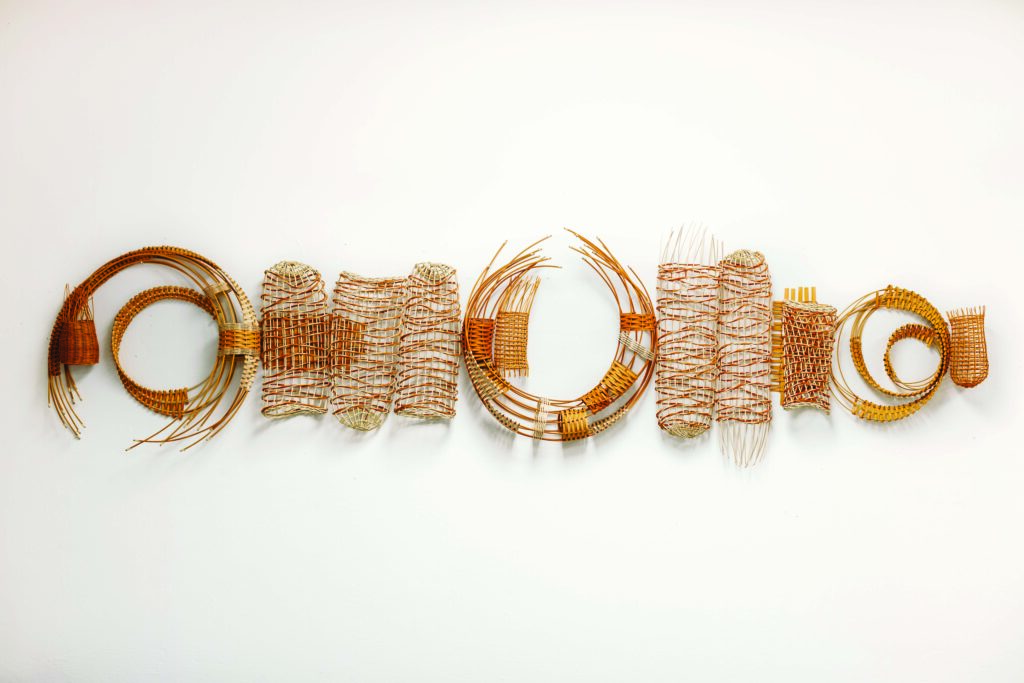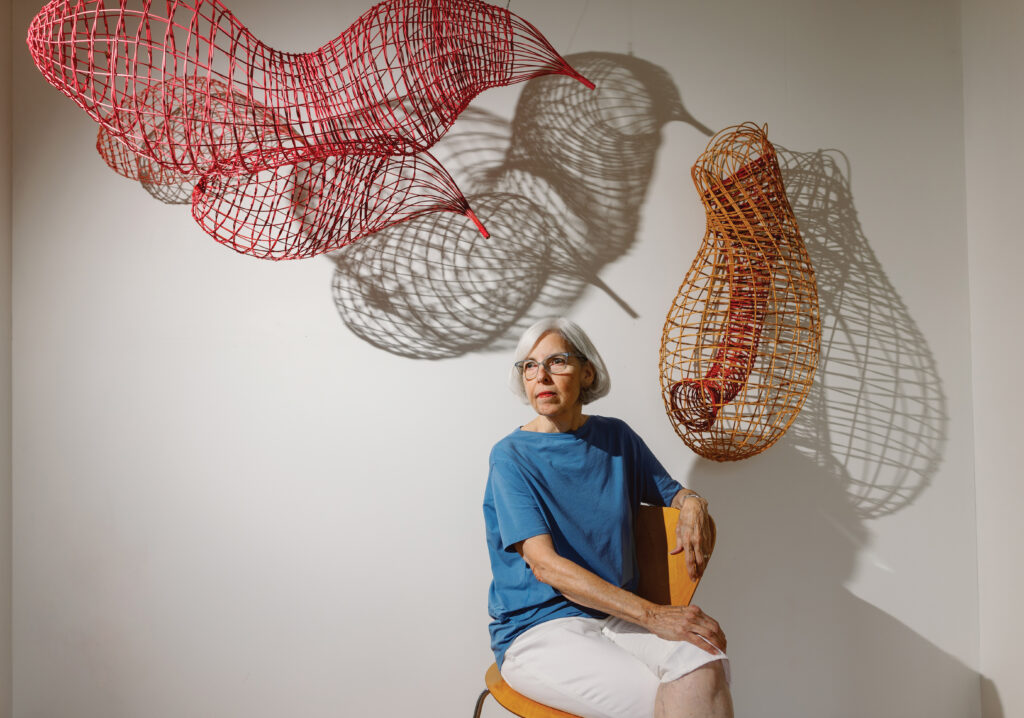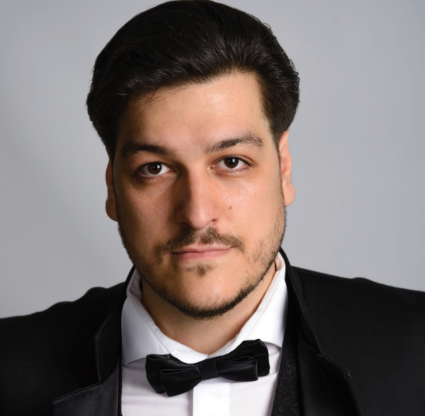Naples artist Mary Day bends slender rattan reeds so their ends cross over and under, gently layering to form anthropomorphic sculptures. Like with the organic materials, Mary gently arcs her body as she weaves. “The broader gestures of my shoulders, arms and hands allow the rattan to become its own shape,” she explains as she molds the reeds to echo their original, curving forms found in nature.
At first glance, her mixed-media sculptures resemble curiously wispy baskets. Too fragile and laden with philosophy to be used as practical pieces, the interlaced tangles of thin, earth-toned reeds undulate and splay open into forms that echo the spreading shoots of plants, voluptuous thighs and slender arms, or the eyes and lips of a face. “The vessel form as a metaphorical container is an ongoing preoccupation for me,” Mary says. As neatly as she tucks the woven strands into each other, Mary also knits messages and philosophies into her works. She’s driven by a lifelong fascination with nature; the study of religion in the Neolithic era, when it’s believed people worshiped a monotheistic female deity; and the historic power of women.
Born in Colombia and raised between Miami and the Caribbean, Mary was always aware of the natural world around her. “Growing up in subtropical environments gave me an early affinity for nature,” she says. “I consider my process an ongoing visual discourse with Mother Earth.” A film about Vincent van Gogh sparked a childhood interest in art, leading to a bachelor’s degree in art history and photography and a master’s degree in painting from Florida State University. After graduating, Mary spent decades developing a robust drawing practice, creating abstract, geometric images in charcoal, conte and various inks, while working as an art professor at the University of Nebraska and as an instructor in the Department of Visual Technology at Metropolitan Community College in Omaha.
In 2010, inspired by the organic shapes in her drawings, Mary began creating woven works. “I wanted to see if I could make a three-dimensional equivalent of the linear marks and forms recorded through my drawing practice,” she says. The pieces, often resembling a panoply of gourds or women’s swelling hips and breasts, took a life of their own. Before long, her sculptures were exhibited in venues from Omaha’s Saint Cecilia Cathedral to Rutgers University to Museo de la Filatelia in Oaxaca, Mexico. In 2014, she installed large-scale sculptures in the Museum of Nebraska Art’s garden. Nestled into the surrounding vegetation, they tilted and shifted as the elements affected them, almost seeming to wilt in the Midwestern summer heat.
Mary relocated to Southwest Florida in 2015 and launched smallwalls, a multimedia art studio in the Naples Art District, with her husband, printmaker Gary Day. Locally, her works have been featured in group exhibits at the Naples Botanical Garden, Naples Art Institute and Marco Island Center for the Arts.
In her studio, Mary focuses on weaving as a practice emblematic of women’s communal power. “My work speaks to a matrilineal inheritance based in the earliest Neolithic village sites of Europe,” she says. She looks to the writings of Marija Gimbutas, a Lithuanian archaeologist and anthropologist whose findings suggest from around 7000 B.C. to 3500 B.C., prehistoric European communities worshiped a single female deity. “Her research continually influences my studio practice in terms of forms, symbols and techniques,” Mary says. In Mary’s drawings and sculptures, forms expand and taper in. The narrowing neck of a gourd could also be the nipped-in waist of the exaggerated hourglass figures often seen in Neolithic European sculptures.

To create her vessel-like sculptures, Mary soaks the rattan to make it more pliable. Standing to accommodate her sweeping arm movements, she weaves the reeds into the dominant shape, forming an armature. Then, she weaves in more rattan, using a traditional twining technique, which laces the perpendicular rattan through by alternately passing it over and under the armature strands.
Before she begins the process, Mary dyes the rattan and lets it dry. The light beige material readily accepts the color, which she chooses with deliberate shades of rich, earthy brown that can sometimes give way to the bare color of the reeds. Using immersion dyes to stain the rattan is time-consuming, and the artist performs an elaborate dance, soaking, adding salt and rotating the coiled rattan in its dye bath every 15 to 20 minutes before adding soda ash, soaking the coils again and giving them a final wash in clean, running water.
The result is like skin tones, with variations of different shades encapsulating light and dark—a poignant decision that reflects Mary’s desire to create artwork that can speak to anyone. The colors also help create a sense of the vessels’ human form, more so than if they were, say, dyed purple. “My vessels’ anthropomorphic qualities organically evolve through a synthesis of feeling, thinking and doing,” Mary says. “And I think they’re ultimately not only about humans or nature, but about humankind.”





